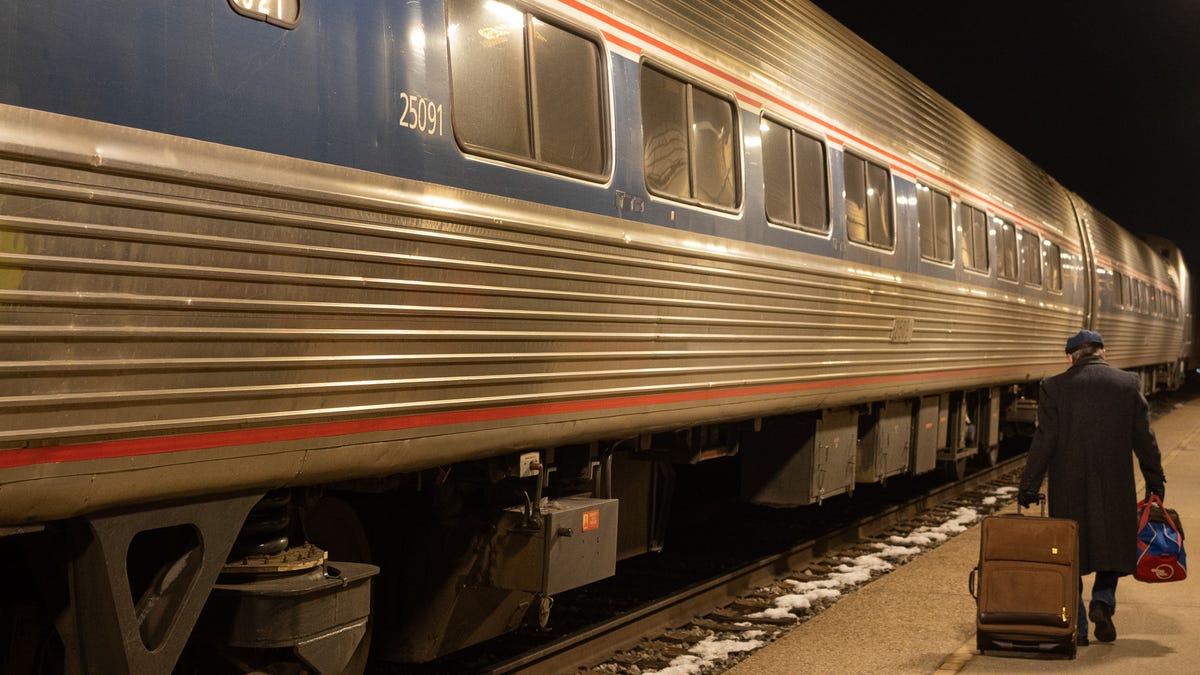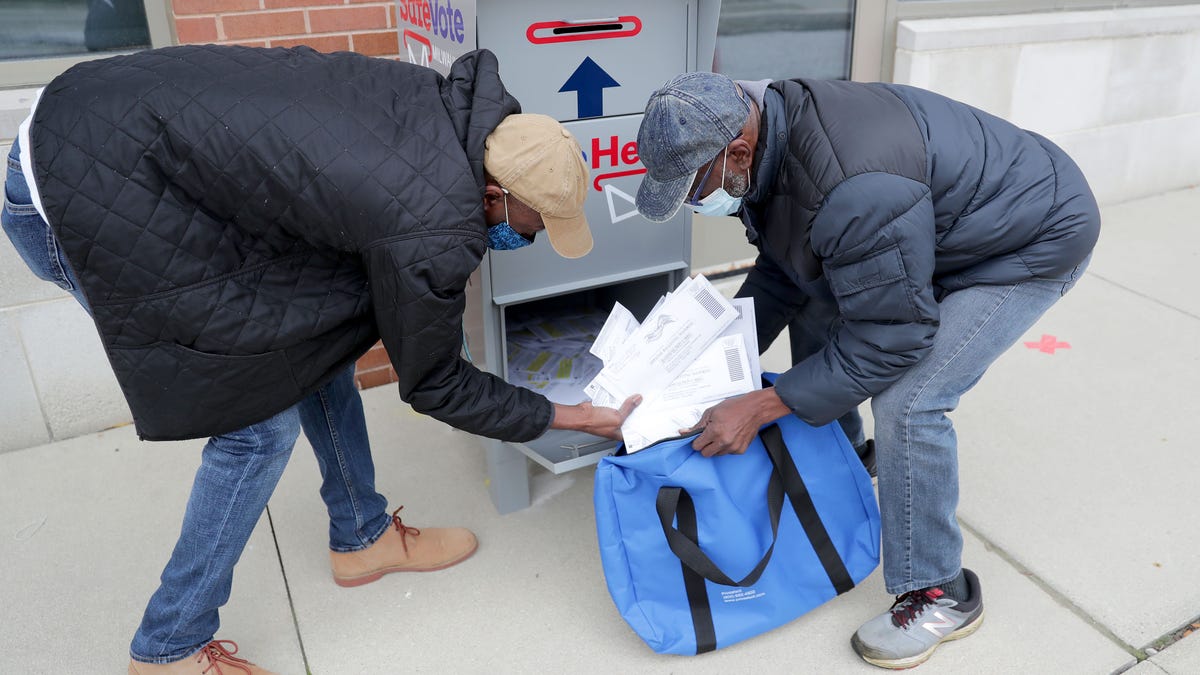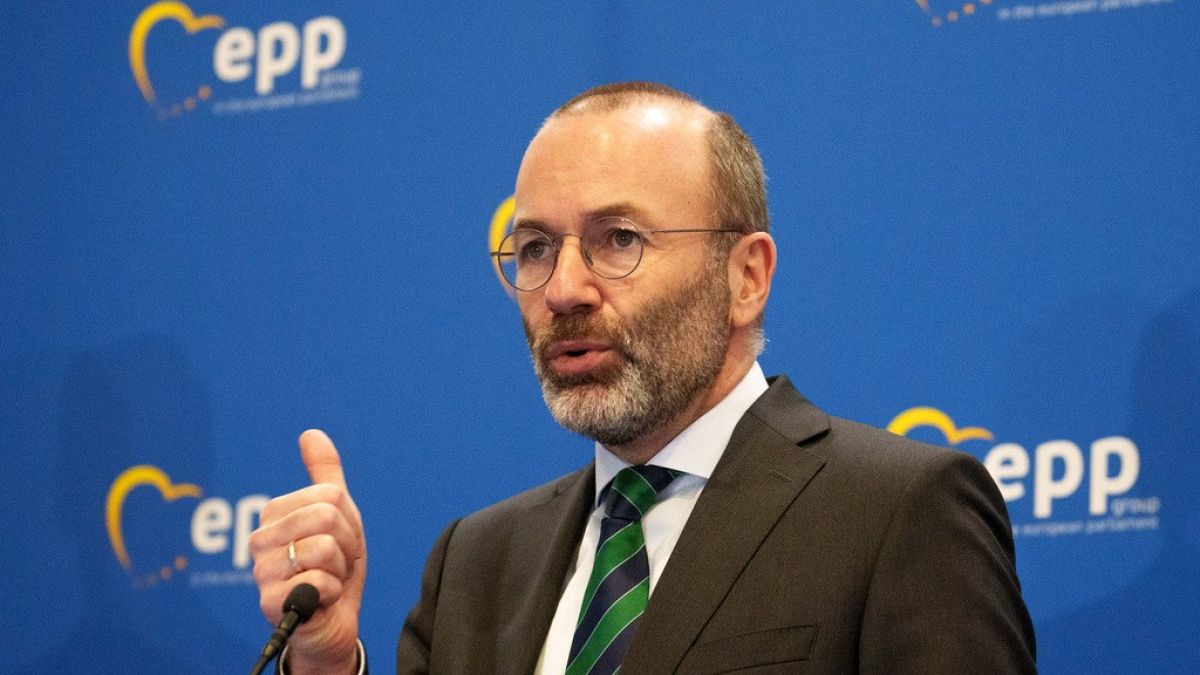Ohio
Amtrak in Ohio: Backers hope where there’s a will, there’s a railway

Mitch Radakovich’s car is older than he is.
But that doesn’t faze the 24-year-old Cincinnati native, who travels by foot and bus between his home in Over-the-Rhine, his office downtown and wherever else he wants to go in Greater Cincinnati.
“I really only live a ‘car-lite’ life,” Radakovich said. “To go completely car-free is really exciting to me.”
Fueling his excitement, at present, are plans to expand Amtrak passenger service across Ohio.
Those efforts took big steps forward late last year, with four Ohio-centered expansion proposals winning federal dollars.
And while new Amtrak service is still years away, the four projects are now guaranteed additional federal funding for planning and, absent missteps, construction.
Radakovich will join fellow volunteers of a rail advocacy group called All Aboard Ohio as they promote passenger train possibilities during the Cincinnati stop of their Whistle Stop Tour.
Where are Whistle Stops on the tour?
All Aboard Ohio, one of more than nearly 200 individuals and groups publicly supporting the four Ohio proposals, will review the options and next steps during an event downtown at 1 p.m. on Wednesday. Its presentation is open to the public, with limited space still available.
The group opened its Whistle Stop Tour in Dayton last week, with upcoming presentations planned for Columbus, Cleveland, Toledo and Crestline, Ohio.
“This is something I want for Ohio,” said Erin Rosiello, the group’s chair. “This is something everyone should want for Ohio.”
Where would new passenger trains travel?
Passenger train travel got a big boost late last year from the U.S. Department of Transportation.
That happened Dec. 8 when the department’s Federal Railroad Administration announced 69 grants of $500,000 each to governments and other groups looking to establish or expand routes.
The four Ohio proposals were among them:
- The Cincinnati-Columbus-Cleveland-Dayton corridor – known as 3C+D – would connect Ohio’s four largest metropolitan areas, home to about 57% of the state’s 11.8 million residents. With three to five daily round trips, between 400,000 and 800,000 people would use this line a year, according to the Mid-Ohio Regional Planning Commission.
- The Midwest Connect line would connect Pittsburgh to Chicago, through Columbus and Fort Wayne, Indiana. With six daily round trips, 200,000 to 400,000 riders would use this route a year, the Mid-Ohio Regional Planning group said.
- New passenger train travel from Cleveland to Detroit, passing through Toledo, would have an annual economic impact of $100 million, according to Amtrak’s Connect US Corridor Vision report of 2020.
- The Cardinal, Amtrak’s existing train from New York to Chicago with a stop at Cincinnati’s Union Terminal, would expand from three to seven days a week.
After they spend the first grant, backers of the projects will get more federal money to look at key logistics: which trains and tracks to use, how fast and often trains will run, and what passengers will pay for tickets.
“Those are the important questions,” said Mark Policinski, CEO of the Ohio-Kentucky-Indiana Regional Council of Governments. “If those aren’t answered satisfactorily, there is no next phase.”
Where does Amtrak operate in Ohio now?
Amtrak passenger trains currently stop in six Ohio cities.
The Capitol Limited, a daily 764-mile line from Washington, D.C.., to Chicago, hits five of them in the northern part of the state – Alliance, Cleveland, Elyria, Sandusky and Toledo. The Capitol, launched in 1981, makes 16 stops on each 18-hour one-way trip. The Ohio stops come in the middle of the night – Cleveland at close to 3 a.m. while heading west and close to 2 a.m. returning east.
The Cardinal, a 1,146-mile train from New York to Chicago, hits only Cincinnati in Ohio, arriving around 1:30 a.m. while westbound and about 3:30 a.m. while eastbound. The line, launched in 1977, travels three times a week, making 32 stops on each leg of 26 1/2-plus hours.
Capitol ridership was about 126,000 for the year ended Sept. 30, down from pre-COVID traffic of close to 210,000 a year. About 83,000 people rode the Cardinal in the last fiscal year, down from 2019 ridership of 109,000.
Central Ohio, meanwhile, has been without passenger trains for decades, with Columbus’ last service ending in 1979. That makes it the largest city east of the Mississippi River without passenger rail, said William Murdoch, executive director of Mid-Ohio Regional Planning Commission.
Amtrak supports expansion in the state, with plans to tie into some 5,000 miles of existing Ohio tracks. “They are thinking like a business,” Murdoch said.
What are the obstacles to Amtrak expansion?
To move forward, however, Amtrak will need to work with Norfolk Southern and CSX Transportation, the freight lines that operate in Ohio, to win track-sharing agreements that keep passenger service on schedule. “On-time performance is imperative,” said Joseph Schwieterman, a transportation expert and professor at Chicago’s DePaul University.
Amtrak will also need stations along the way. It could use Union Terminal in Cincinnati and Cleveland’s Lakefront Station site for the 3C+D line – both are included in its 2020 plan – but would need space in Dayton, Columbus and other cities along the route.
Ohio needs more passenger rail to expand its economy and jobs, supporters believe. More train service would allow Ohioans to live in one city and more easily work in another.
Trains will also take cars off roads, reducing congestion and pollution; and make across-state travel easier for people who don’t drive for financial, health or other reasons.
The 3C+D project alone would have a statewide economic impact of $47 million a year, according to a November study conducted for All Aboard Ohio. Amtrak, in its 2020 study, put the potential statewide impact of 3C+D service at close to $130 million a year.
When does All Aboard Ohio meet in Cincinnati?
When Radakovich took over as director of the southwest chapter of All Aboard Ohio last summer, three people came to his first meeting. In December, more than 30 showed up.
They’ll need patience as they wait for Amtrak to expand. The planning alone will take five or six years.
“Sometimes things take time, but that’s no reason not to plan for the future,” said Radakovich, a data scientist at Procter & Gamble Co.
As they wait for plans to play out, All Aboard members talk about such issues as how to improve current local Amtrak service and bus travel on Greyhound.
Next week, they’ll take up more close-to-home matters with guest Cincinnati City Council member Mark Jeffreys. The meeting is at 6 p.m. Jan. 24 at the Walnut Hills Public Library, 2533 Kemper Lane, and open to all.

Ohio
‘Day Without Childcare’ demonstrators to Ohio lawmakers: ‘Show us the money!’

COLUMBUS, Ohio—More than 250 childcare centers around Ohio were closed Monday to mark the third annual Day Without Childcare, meant to draw attention to efforts to make childcare more affordable and raise wages for providers, according to organizers of the effort.
Many of those childcare teachers and parents of kids in childcare spent part of the day in Columbus demonstrating in front of the Ohio Statehouse. The protesters called on lawmakers to pass a variety of reforms and policy changes, though most of them had a common theme.
“What did Jerry McGuire say?” said Nefree Cook, a Cincinnati childcare provider, on the Statehouse steps.
“Show me the money!” the crowd of a couple hundred people shouted back.
“That’s what we need – show us the money!” Cook replied.
Monday’s Statehouse rally comes as Ohio and other states are in the midst of a childcare crisis. Ohio parents, on average, pay more for childcare than what they pay in rent while – seemingly paradoxically – many providers can’t offer wages high enough to maintain staff.
While Ohio lawmakers on both sides of the aisle have started to pay more attention to the problem, under pressure from business groups that say it threatens the state’s growing job market, speaker after speaker at Monday’s rally said the problem will continue until there’s a large influx of government funding.
The CEO (Caring Economy Organizing) Project, a division of the left-leaning Ohio Organizing Collaborative, said in a release that it organized Monday’s Statehouse rally to call for, among other things:
- Raising income eligibility for publicly funded childcare in Ohio from up to 142% of the federal poverty line ($39,405 per year for a family of four) to those making up to 300% of the poverty line, or $83,250 annually for a four-person family
- Raising Ohio’s childcare subsidies so that families qualifying for aid have access to the cheapest 75% of child-care centers in their area. Right now, Ohio’s base reimbursement rates cover only the cheapest 35% of childcare options.
- Offering a refundable state tax credit of up to $1,000 per year to lower- and middle-income families with children
- Making the state’s Earned Income Tax Credit refundable, meaning lower-income Ohioans who qualify would receive a refund even if they don’t owe any state income tax.
- Providing more money in general for state childcare programs.
It remains to be seen what all these initiatives, if passed, would cost, though, at bare minimum, it would require hundreds of millions of dollars.
“We want to see the state invest in our families in an equitable way,” said Tami Lunan, director of the CEO Project, in an interview. “That’s the main thing we want to lift up.”
Monday’s rally specifically focused on helping childcare providers who are women and/or racial minorities; the majority of attendees were women of color.
Lunan said the rally’s organizers are planning to hold similar rallies on a “much larger scale” in the future.
Closing childcare centers for a day, Lunan said, shows people the importance of childcare and why it’s worth fighting to improve the childcare system. Providers, she said, make sure to tell parents why they’re closing for the day – in part to convince them to come out themselves to demonstrate.
“The idea’s to show the economic impact,” she said. “We believe that that’s the only way that these women, who are business owners, are going to be seen.”
Lunan said childcare advocates are pushing lawmakers to include their policy goals in next year’s two-year state budget plan.
Until a few months ago, Ohio’s child care subsidy rates for poorer families were tied for the lowest of any state in the nation. That led the federal government to demand that Ohio raise their rates or face penalties.
As a result, Gov. Mike DeWine’s administration is now seeking to raise base reimbursement rates to the 50th percentile — not by increasing spending, but by reducing financial incentives to child care facilities with high ratings in the Step Up To Quality program. Another proposed change would reduce Step Up To Quality’s current five-tier ratings system with a three-tiered one.
Lunan said she’s opposed to the proposed changes, saying instead lawmakers should have responded to federal demands by including more money for childcare in last year’s state budget bill. A three-tier ratings system, she said is “still not equitable.”
Jeremy Pelzer covers state politics and policy for Cleveland.com and The Plain Dealer.
Ohio
Which Ohio State player has best odds for 2024 NFL Rookie of the Year?

Michael Hall Jr. has high standards for himself heading into his rookie season in the NFL.
The former Ohio State defensive tackle and Cleveland Browns second round draft pick told reporters that his goal is to follow the standard set by many former Buckeyes. He’s aiming for Defensive Rookie of the Year. He’d be “a fool not to.”
“It’s not overwhelming,” Hall said. “I knew what I was getting myself into. They’re holding me to a high standard and I hold myself to a high standard. I am my worst critic. Just happy to be out here and I gotta get on top of my A-game for sure.”
In three seasons at Ohio State, Hall had 45 tackles, 10 tackles-for-loss and 6 sacks.
Ohio State to NFL: Which OSU players have won Rookie of the Year?
Since the inception of the Associated Press’ Offensive and Defensive Rookies of the Year awards, eight former Ohio State players have earned the honor, including six since 2016.
AP Offensive Rookie of the Year
AP Defensive Rookie of the Year
2024 NFL Rookie of the Year odds: Which Ohio State player could win?
A former Ohio State player is not the favorite to be named the 2024 Offensive or Defensive Rookie of the Year.
Arizona Cardinals wide receiver Marvin Harrison Jr. has the best consensus odds of any Buckeye, but sits behind Chicago Bears quarterback Caleb Williams and Washington Commanders quarterback Jayden Daniels for Offensive Rookie of the Year.
Minnesota Vikings linebacker Dallas Turner is the betting favorite for 2024 Defensive Rookie of the Year.
Marvin Harrison Jr.; Arizona Cardinals wide receiver
- Draft Kings: +650
- FanDuel: +700
- BetMGM: +650
Tommy Eichenberg; Las Vegas Raiders linebacker
- Draft Kings: +13000
- FanDuel: +10000
- BetMGM: +10000
Cade Stover; Houston Texans tight end
- Draft Kings: +15000
- FanDuel: +15000
- BetMGM: +20000
Michael Hall Jr.; Cleveland Browns defensive tackle
- Draft Kings: +15000
- FanDuel: +10000
- BetMGM: +20000
Miyan Williams; unsigned running back
- Draft Kings: +20000
- FanDuel: +20000
- BetMGM: +25000
Get more Ohio State football news by listening to our podcasts
cgay@dispatch.com
Ohio
Ohio University Chillicothe to host Red Cross blood drive

CHILLICOTHE – Ohio University Chillicothe will host an American Red Cross blood drive from 10 a.m. to 4 p.m. May 20, at the Shoemaker Center.
“Ohio University Chillicothe is committed to strengthening our community and helping patients in need through blood donations,” said Britney Hamman, Assistant Professor of Instruction in OHIO Chillicothe’s nursing program in a news release. “This blood drive is our way of allowing staff, colleagues, and neighbors to help save lives.”
Blood is a perishable product that can only come from volunteer blood donors. With someone in the U.S. needing blood every two seconds, blood products must be constantly replenished, according to the Red Cross.
“We urge community members to consider blood donation and help ensure that patients in local hospitals have a supply of blood ready when needed. There’s no better feeling than knowing that your blood donation may give someone a second chance at life. Even if you are not able to donate, you can still make an impact in patients’ lives by promoting a blood drive or volunteering at a local drive,” said Hamman.
All blood types are needed, and there is an emergency need for type O blood donors and platelet donors.
Please call 1-800-RED CROSS (1-800-733-2767) or schedule online. Presenting donors in May 2024 will be entered in weekly drawings for a 4-person zipline gift certificate from Hocking Hills Canopy Tours. Streamline your donation experience and save up to 15 minutes by visiting RedCrossBlood.org/RapidPass to complete your pre-donation reading and health history questions on the day of your appointment.
Walk-ins are also welcome, but individuals who walk in without first scheduling an appointment generally have a longer wait time to donate. For more information, visit the American Red Cross website.
This blood drive is sponsored by OHIO Chillicothe’s Wellness and Safety Committee
-

 Politics1 week ago
Politics1 week agoAustralian lawmakers send letter urging Biden to drop case against Julian Assange on World Press Freedom Day
-

 World1 week ago
World1 week agoBrussels, my love? Champage cracked open to celebrate the Big Bang
-
News1 week ago
A group of Republicans has united to defend the legitimacy of US elections and those who run them
-

 Politics1 week ago
Politics1 week agoHouse Dems seeking re-election seemingly reverse course, call on Biden to 'bring order to the southern border'
-

 World1 week ago
World1 week ago‘It’s going to be worse’: Brazil braces for more pain amid record flooding
-

 Politics1 week ago
Politics1 week ago'Stop the invasion': Migrant flights in battleground state ignite bipartisan backlash from lawmakers
-

 World1 week ago
World1 week agoGerman socialist candidate attacked before EU elections
-

 World1 week ago
World1 week agoSpain and Argentina trade jibes in row before visit by President Milei

















